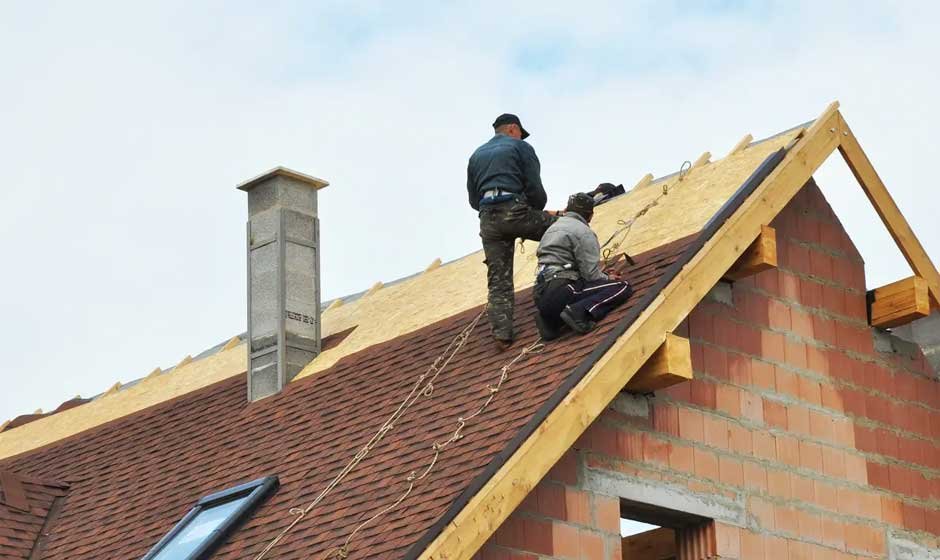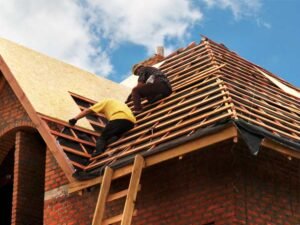Your home’s roof serves as the first line of defense against weather, pests, and environmental damage. It protects the structure and the comfort and safety of those living inside. However, many homeowners delay roof replacement, often overlooking signs of wear and damage or postponing the expense. While waiting might seem like a way to save money, it usually results in much higher costs and complications. We will explore the true consequences of delaying roof replacement, including financial burdens, structural damage, and impacts on overall home value and safety. Understanding these risks can help homeowners make informed decisions before minor problems escalate into major issues.
The Hidden Consequences of Delaying Roof Replacement
Escalating Repair and Maintenance Costs
Postponing roof replacement often leads to frequent repairs that may initially appear minor but accumulate substantial expenses over time. Small leaks, broken shingles, and damaged flashing indicate the roof is deteriorating. Addressing these issues with patchwork fixes can temporarily alleviate symptoms, but will not resolve underlying damage. As water penetrates deeper into roofing layers, it compromises the decking and structural supports beneath, which are significantly more expensive to repair or replace. Instead of a one-time replacement cost, homeowners face recurring bills that can easily exceed the price of a full roof replacement. OnPoint Roofing emphasizes how continuous maintenance distorts financial resources and time, making delay a costly false economy.
Structural Damage and Interior Problems
A failing roof affects the entire home structure, not just the exterior. When water seeps through damaged roofing materials, it can cause rot in wooden beams, weaken the attic floor, and foster mold and mildew growth inside walls and ceilings. This moisture intrusion creates unhealthy living conditions and damages insulation, increasing heating and cooling expenses. Over time, structural elements such as rafters and trusses may deteriorate to the point where major reconstruction becomes necessary. Waiting too long to replace the roof risks widespread damage that compromises the home’s integrity, safety, and habitability, requiring extensive repairs far beyond the roof itself.
Decreased Energy Efficiency and Higher Utility Bills
Roofs in poor condition fail to properly insulate a home, which impacts heating and cooling systems. Damaged shingles, missing granules, and deteriorated underlayment allow air leaks and reduce the roof’s ability to regulate indoor temperatures. As a result, homeowners may notice rising energy bills, especially during extreme weather months, because their HVAC systems must work harder to maintain comfort. An aging roof’s lack of proper ventilation and insulation increases energy costs and shortens the lifespan of heating and cooling equipment due to overuse. Timely roof replacement can restore energy efficiency and lower monthly utility expenses.
Reduced Property Value and Market Appeal
A roof nearing the end of its lifespan can severely impact a home’s marketability. Prospective buyers often view an old or damaged roof as a red flag, anticipating costly repairs immediately after purchase. This perception lowers the home’s value and bargaining power, forcing sellers to accept reduced offers or invest in replacement before listing. Furthermore, insurance companies may impose higher premiums or refuse coverage on homes with compromised roofing. Delaying roof replacement, therefore, puts a home at risk of physical damage and diminishes its financial value and attractiveness in the real estate market.
Health Risks from Mold and Pest Infestations
Persistent roof leaks create moist environments conducive to mold growth inside the home. Mold spores can spread rapidly through walls, ceilings, and ventilation systems, causing allergic reactions, respiratory issues, and other health problems for occupants. Additionally, damaged roofing materials provide entry points for pests such as rodents, birds, and insects, which can further compromise the home’s safety and hygiene. The presence of mold and pests requires costly remediation and poses serious health concerns. Early roof replacement helps prevent these risks by maintaining a secure, dry barrier against environmental hazards.
Increased Risk of Sudden Roof Failure
Ignoring signs of roof deterioration increases the likelihood of sudden and catastrophic roof failure, especially during storms or heavy snowfall. A weakened roof may collapse or suffer significant damage under pressure, endangering occupants and leading to emergency repairs that are both expensive and disruptive. In extreme cases, structural collapse can cause injury and result in loss of personal property. Timely roof replacement minimizes the chance of unexpected failures by ensuring the roof remains strong and capable of withstanding weather stresses.
Insurance Complications and Financial Liability
Insurance providers often assess roof condition when underwriting homeowner policies. Delayed replacement of an aging roof can result in denied claims related to roof damage, leaving homeowners responsible for expensive repairs out of pocket. Some insurance companies may increase premiums or cancel coverage if the roof is too risky. In cases where roof failure causes damage to neighboring properties, liability concerns may also arise. Proactively replacing the roof reduces insurance complications and protects homeowners from unexpected financial burdens.
Delaying roof replacement carries significant hidden costs that far outweigh the initial expense of timely action. From escalating repair bills and structural damage to health risks and diminished property value, the consequences of waiting are extensive and often irreversible. Investing in a roof replacement when signs of wear appear safeguards your home’s integrity, protects your financial investment, and ensures a safe living environment for years. Taking prompt action is a crucial step in responsible homeownership that prevents minor issues from becoming major crises.










